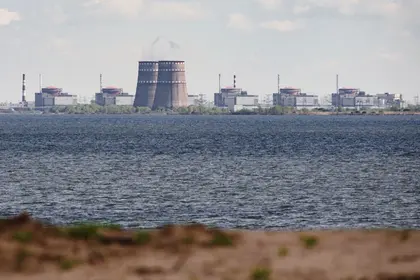The Zaporizhzhia nuclear power plant (ZNPP), the biggest nuclear plant in Europe, is currently occupied and controlled by the Russian military.
It is impossible to predict what the invaders will do next. In fact, Putin does not need to use nuclear weapons. It is enough to attack nuclear plants and accuse the Ukrainian military of committing nuclear terror.
JOIN US ON TELEGRAM
Follow our coverage of the war on the @Kyivpost_official.
The Russian occupiers have been firing rockets continuously at the ZNPP and the nearby city of Enerhodar since August 5. They hit the site of the ZNPP right next to the station’s dry spent nuclear fuel storage facility. But Russia’s leaders accuse the Ukrainian army of these attacks on the plant, something which Ukraine denies.
On August 8, the ZNPP is operating with the risk of violation of radiation and fire safety regulations, the plant’s press service reported on its Telegram channel.
“Periodic shelling of the ZNPP by Russian troops with anti-aircraft missiles over the past few days has caused a serious risk to the safe operation of the plant. As a result of the attack, emergency protection was activated on one of the power units, and one of the three working power units was turned off,” the message stated.
Olena Pareniuk, a senior researcher at the Institute of Safety Problems of the NPP of the National Academy of Sciences of Ukraine, had the following to say on Ukrainian TV on the potential consequences of an explosion: “The problem is that the accident at the ZNPP will, if it happens, be much worse than the accident at the Chornobyl nuclear power plant. The design of the reactors at the ZNNP is much safer than at Chornobyl, but the entire Soviet Union liquidated the Chornobyl disaster, Now, in conditions of hostilities, no-one will liquidate this accident. Ukraine does not have the resources for this.” she explained.

ISW Russian Offensive Campaign Assessment, January 14, 2025
On August 8, UN Secretary-General António Guterres called for international inspectors to be given access to the nuclear facility.
“Any attack on a nuclear plant is a suicidal thing,” Guterres told a news conference in Japan. Guterres said the International Atomic Energy Agency (IAEA) needed access to the plant. “We fully support the IAEA in all their efforts on creating the conditions of stabilization of the plant,” Guterres said.
According to experts, after a possible accident at the Zaporizhzhia nuclear power plant, radioactive isotopes of Cesium, iodine, and, in smaller quantities, strontium are released into the environment. It was what people faced as the result of the accident at the Chornobyl nuclear power plant in April 1986.
Caesium is an analog of potassium. Potassium is important in our body and is found primarily in the muscles. On the other hand, Caesium easily replaces it and, while it is in the body, irradiates it, increasing the likelihood of cancer. The metal remains in ecosystems for a long time, from where it is difficult to remove and, therefore, difficult to avoid.
Iodine has a relatively short half-life of eight and a half days. In other words, it will almost disappear from the environment after a possible accident.
The problem is that the local Ukrainian population has an iodine deficiency. Radioactive iodine (if it appears in the environment) compensates for this deficiency and accumulates primarily in the thyroid gland. Its radioactive decay leads to irradiation of this organ and increases the likelihood of thyroid cancer appearing.
Strontium, from the point of view of biology, is an analog of calcium (it is part of the bones). It means that it will also replace it in human beings and lead to the irradiation of tissue and organs.
The geographical territory of the damage will depend on the direction of the wind at the time of any accident. The Black Sea connects with the Mediterranean Sea, which means that in the event of a potential accident, radioactive pollution will spread throughout the basin and affect many European countries.
You can also highlight the text and press Ctrl + Enter






